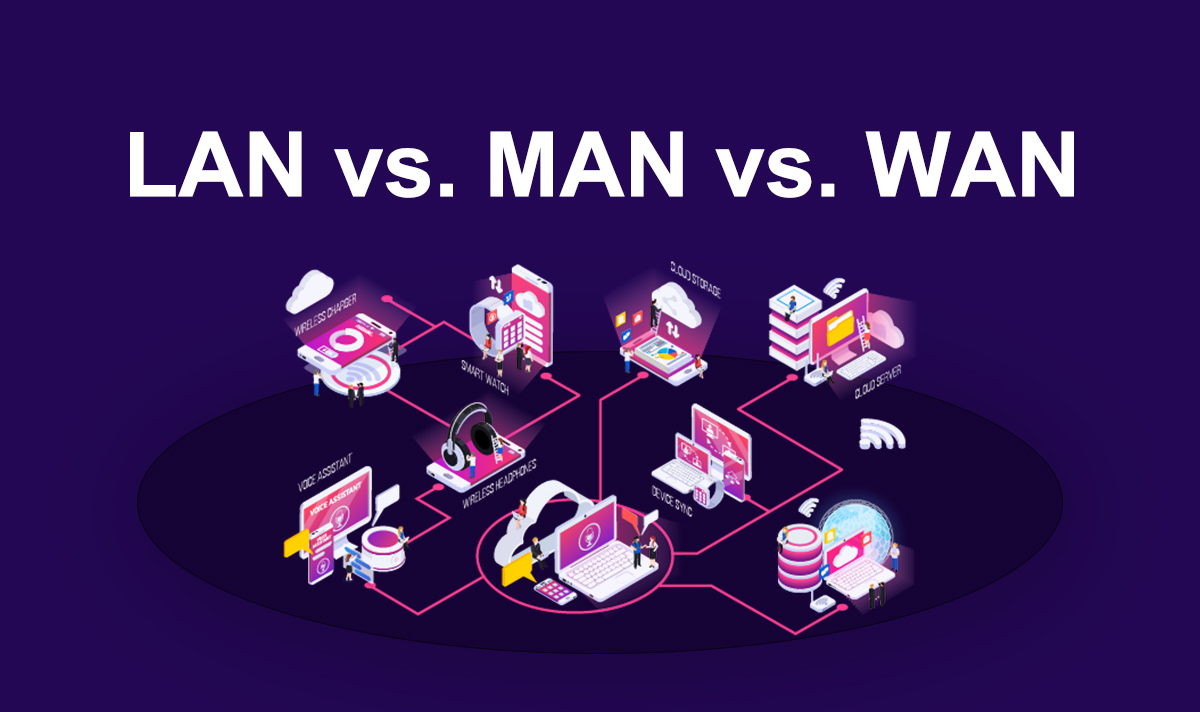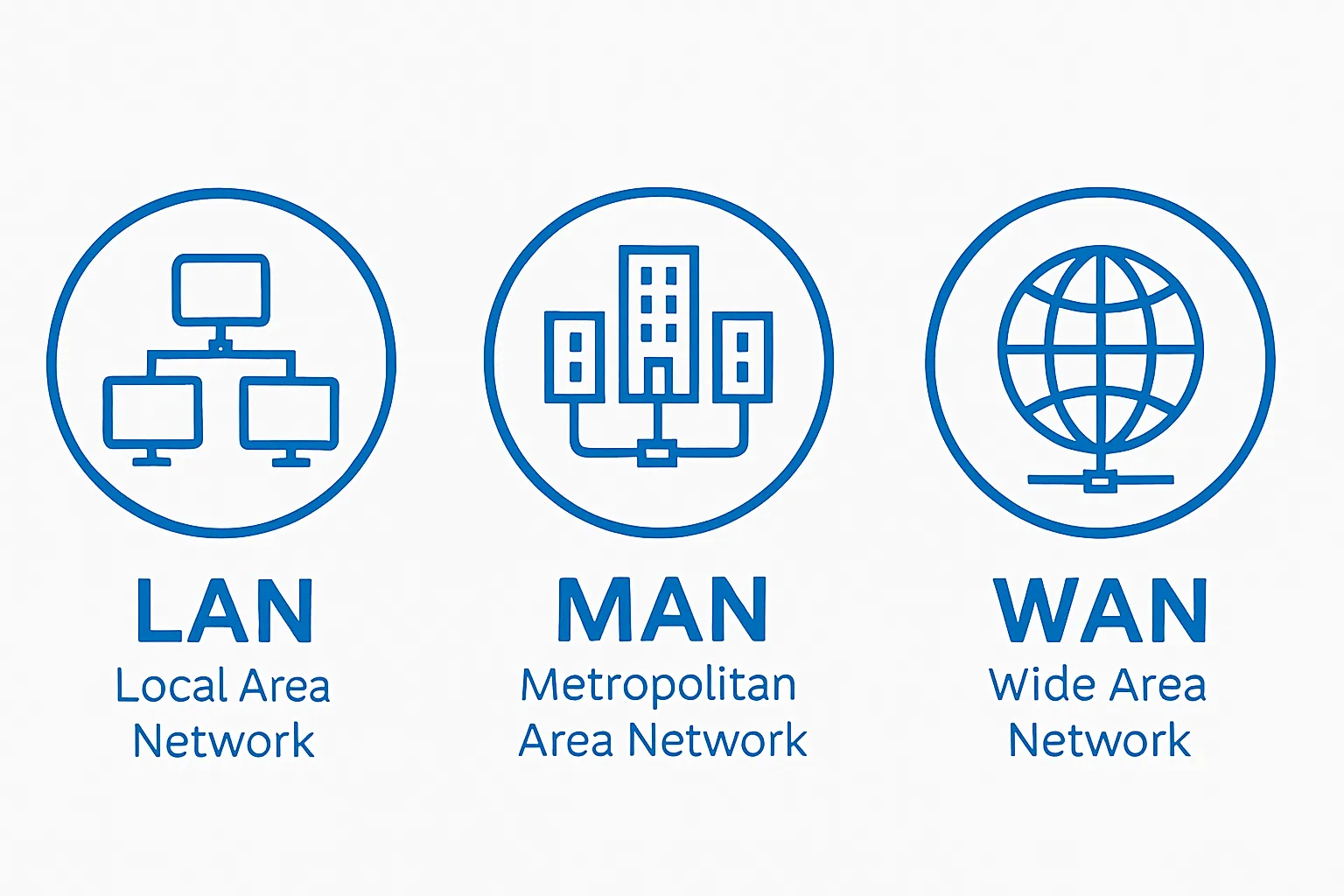
🌐 Understanding Core Network Types: LAN, MAN, and WAN
Three primary network architectures define how digital devices connect across different distances:
Each serves unique scopes—from local connectivity in buildings to extensive communication across cities and continents.
1. Local Area Network (LAN)
A LAN connects devices within confined locations like homes, schools, or office buildings. It typically utilizes Ethernet or Wi‑Fi and delivers high data speeds—ranging from hundreds of megabits to multiple gigabits per second. LANs are also simpler to design and manage due to their limited reach.
Use Cases:
Shared access to printers, files, and resources
High-speed local communication
Secure internal networks
2. Metropolitan Area Network (MAN)
A MAN spans the expanse between LANs and WANs—connecting multiple LANs across a city or metropolitan region. Covering distances typically between 5 to 50 km, MANs often rely on fiber-optic infrastructure such as Metro Ethernet or SONET/SDH rings.
Typical Use Cases:
Interconnecting campuses or branch offices in one city
City-wide public services like surveillance or transport systems
Backbone for municipal or enterprise networks
3. Wide Area Network (WAN)
A WAN enables communication across large geographic expanses—from provincial regions to global networks. Unlike LANs or MANs, WANs usually require leased telecommunications infrastructure such as fiber, satellite, or microwave links.
Use Cases:
Global enterprise connectivity
Branch-office communications across countries
Cloud and internet access from remote locations
🌐 LAN vs MAN vs WAN: Quick Comparison

Feature | LAN | MAN | WAN |
|---|---|---|---|
Coverage | Building/campus | City or metropolitan area | Regional, national, or global |
Typical Speed | 100 Mbps – 10+ Gbps | Hundreds Mbps to multiple Gbps | Variable; often lower than MAN |
Complexity | Simple—locally managed | Medium—geographical coordination | High—often multi-provider and complex |
Infrastructure Cost | Low to moderate | Moderate to high | High—long haul and leased solutions |
Common Applications | Offices, homes, schools | Campuses, city services | Enterprise WANs, global IT systems |
🌐 Why LINK‑PP Products Excel in All Network Layers
High-integrity hardware is critical across all network types. Here's how LINK‑PP supports them:
LANs: Offering robust RJ45 MagJacks and Ethernet magnetics for reliable performance.
MANs: Supplying durable and high-speed connectors and modules tailored for Metro Ethernet architectures and city-scale deployments.
WANs: Delivering fiber optical modules and interfaces optimized for long-distance, high-integrity transmission.
LINK‑PP hardware is industry-certified and widely trusted by global OEMs for secure, scalable networking—from local offices to global backbones.
🌐 Final Thoughts
Understanding the distinctions and overlaps between LAN, MAN, and WAN is essential for sound network design and scaling. Whether connecting within a single room or across continents, each network type plays a critical role.
LINK‑PP delivers reliable components—ranging from RJ45 connectors to fiber modules—that meet the demands of all three network layers. Visit l‑p.com to explore our comprehensive infrastructure solutions tailored for high-performance networks.




